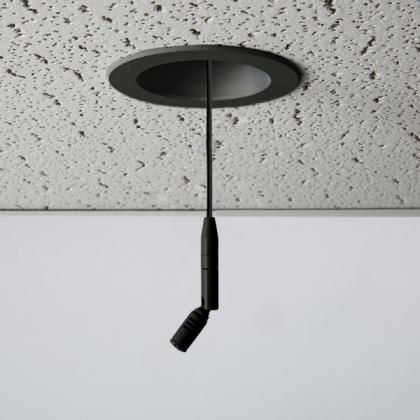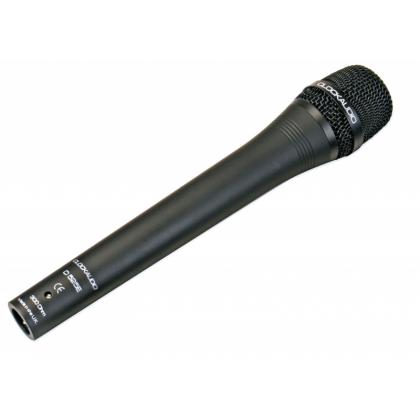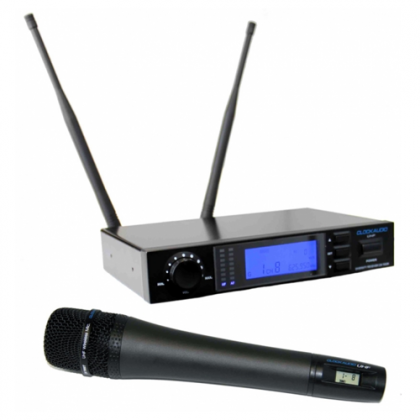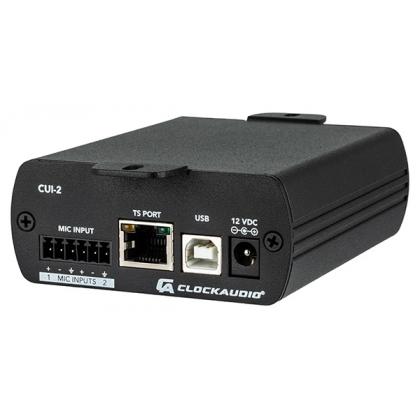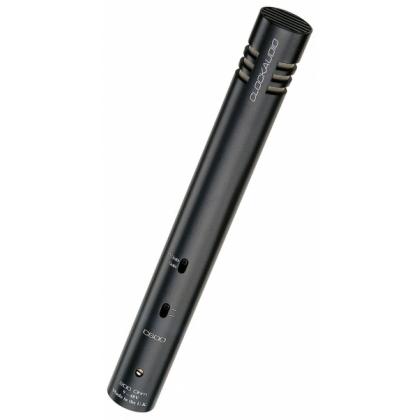Top 10 Tips for voice clarity and microphone skills in presentations
How to get the best performance from a microphone
Getting the best performance from a microphone is essential to the success of a presentation or speech, to clearly communicate the message and to engage the audience. HowToAV talks to Eddy Brixen of DPA Microphones about microphone techniques, correct choice of microphone and loudspeaker equipment and voice clarity for presentations.
Designing an audio presentation system - consider the audience's hearing abilities
When designing an audio presentation or public address system, it is key to ensure that the potential different hearing abilities of the audience are understood and addressed. Not everyone in the audience will have fully unimpaired hearing; in fact, research has shown that around half of audience members will have some form of hearing loss or hearing impairment.
Therefore, this must be considered in the volume levels, speaker placement and additional assistive listening technologies (eg. induction loop systems) employed as part of the overall audio system design.
Training the presenter in the correct use of the microphone
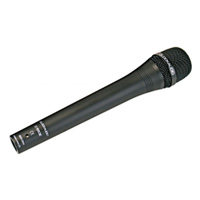 A little bit of training on microphone technique can go a long way when it comes to clarity of voice and a successful presentation!
A little bit of training on microphone technique can go a long way when it comes to clarity of voice and a successful presentation!
Don't expect all presenters and speakers to be confident with their microphone technique - in fact, many very able and eloquent speakers will try to avoid using a microphone at all! (see: "I'll be fine without thanks, I've got a loud voice!.."). Initially some users may find using a microphone off-putting - and they might assume that is they can hear themselves, so can everyone else.
Explain to them that the size of the audience, acoustics of the room, ambient noise levels, etc will make it more difficult for the audience to hear everything that is said. And if the audience can't hear clearly, they will quickly lose focus / interest.
In addition, for any audience members with hearing impairments who make use of assistance listening technologies, it is essential for the presenter to use the microphone in order for hearing technologies to function.
What microphone techniques should users consider?
- Consider the microphone type; is it a fixed microphone where the presenter needs to stand in the same position, or portable microphone - allowing you to move around the room?
-
Microphone positioning - if the microphone is fixed, then it will have been installed in a position to consider the audience's view of the presenter and any screens, etc - and, of course, the presenter's view of their audience. A fixed microphone should also have been set-up to avoid feedback between the mic and the loudspeaker(s).
However, a 'roaming' or portable/wireless microphone allows the user to walk freely around the room - which can easily result in feedback if the presenter moves to close to the loudspeakers with the microphone. Ensure the presenter knows the 'safe' position limitations for a wireless microphone (ie. where they can walk/stand without disrupting the sound). -
Does the microphone have an on/off switch?
Find out if the microphone has an on/off or 'mute' switch - and ensure it is switched on when you want to be heard and switched off (or muted) when you don't! And don't forget if you are wearing a tieclip / beltpack microphone - switch it off or take it off when you leave the podium / room (we've all heard the stories of presenters popping to the rest room whilst still mic'd up!) - Sound check before you start and test again just before speaking to ensure the microphone is working and the audience can hear you.
- Keep a sensible distance from the microphone; not too close to distort the sound and not too far away which will mean you cannot be heard clearly.
- Check the batteries! If using a wireless / portable microphone, make sure that the batteries are either fully charged or are new. Undercharged batteries can cause many issues including intermittent sound - and will result in an embarrassing and ineffective presentation or speech.
How do room acoustics affect audio systems and voice clarity?
There are a number of architectural and acoustic factors of a room that will affect the performance of a microphone / audio system; size and shape of the room, ambient noise, reflectivity of the environment and number of people in the room, for example.
How can you reduce reverberation levels in the room? Hard, acoustically reflective surfaces in the room will significantly increase reverberation of sound, making it much more difficult to understand what the presenter is saying. By adding acoustically absorbent materials to the room - such as carpets, curtains or acoustic panels - will greatly reduce the reverberation levels therefore improving the sound.
What is ambient noise and how does it affect sound?
Ambient noise is any unwanted sound and noises within any area / location; this could be noise from adjacent rooms, equipment such as computers or air conditioning, activities or traffic from outside the building, etc - or it could just be a lively / noisy audience!
It is important to consider and factor-in any ambient noise and how it could affect the sound and voice clarity in a presentation. And remember that ambient noise is likely to be unpredictable - equipment, traffic, people are likely to fluctuate on different days and at different times throughout the day.
Increasing the volume level of the presenter's voice is one solution, of course; but, where possible, reducing the ambient noise level will always be a better option!
Choosing the right microphone type
What microphone you consider for a live presentation/conferencing all depends on:
- How visible the microphones should or should not be.
- The background noise you may have.
- The electromagnetic background noise - for example if you have an induction loop installed a dynamic microphone would be a problem for this.
- Are there ultrasonic sensors - these have very high levels and it goes into microphones and some wireless systems and mess the sound up.
- Outside factors such as with wireless systems for instance.
Correct positioning of the microphone
Microphone placement is important for optimal clarity and for effective audience engagement.
Ensuring that the microphone is in a comfortable position / height for the presenter will help to ensure that they position themselves at the optimal distance from the microphone.
Using a gooseneck microphone allows different presenters to easily reposition the microphone to a comfortable height. Roaming or wireless microphones have full flexibility of movement, of course, but a little training with each presenter is always recommended to help avoid clipping, distortion or feedback.
Correct positioning of loudspeakers
Positioning the loudspeakers correctly should result in even, clear coverage of the presenter's voice for all members of the audience, whilst at the same time ensuring the sound seems natural - not overly loud and that the sound appears to coming from the presenter, rather than somewhere else in the room.
 A well designed permanent audio installation will ensure all these factors have been addressed, but what about a portable or temporary audio system?
A well designed permanent audio installation will ensure all these factors have been addressed, but what about a portable or temporary audio system?
In many cases where there is no installed public address system, a portable PA system can be used. Usually featuring a powered (or 'amplified') loudspeaker and wireless microphone(s) - and often battery powered, a portable PA system is ideal for smaller audience presentations, for transporting in the car between venues or for storing away in a venue cupboard when not required.
But this level of portability can have its problems if not used correctly, resulting in bad sound quality, feedback or an unnatural sound source direction. Where possible, use a more powerful portable PA system so that the system isn't being driven to hard or at full volume. This will help with quality of sound and reduce issues of feedback.
It might be tempting to position the powered speaker as far away from the presenter as possible (with the intention of wider coverage) - and a frequent mistake is to place it at the back of the room. This is likely to result in a very confusing and off-putting direction of voice - as the audeince see the presenter in front of them, but hear their voice from behind.
Use high quality audio equipment
High quality audio equipment quite simply, results in better audio reproduction and better results for the presenter and their audience. High quality microphones will pick up the voice better, high quality speakers will reproduce the sound better.
The top 10 tips to consider for voice clarity and microphone skills in presentations:
- Consider the hearing ability of the audience
- Train the presenter in correct use of microphone
- Microphone technique
- Room acoustics
- Ambient noise
- Choosing the right type of microphone
- Correct positioning of the microphone
- Loudspeaker types and the positioning of loudspeakers
- Modelling an audio system
- Use high quality equipment
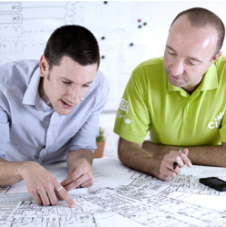 Need help with audio system design or product choice?
Need help with audio system design or product choice?
CIE is one of the UK's leading distributors and system designers for professional audio and public address.
With over 50 years experience in supply and system design for many of the UK's largest, high profile audio projects, our AV experts provide a unique level of technical support and customer service.
Call the CIE audio experts now on T. 0115 9770075 or contact us today.
Featured Products
